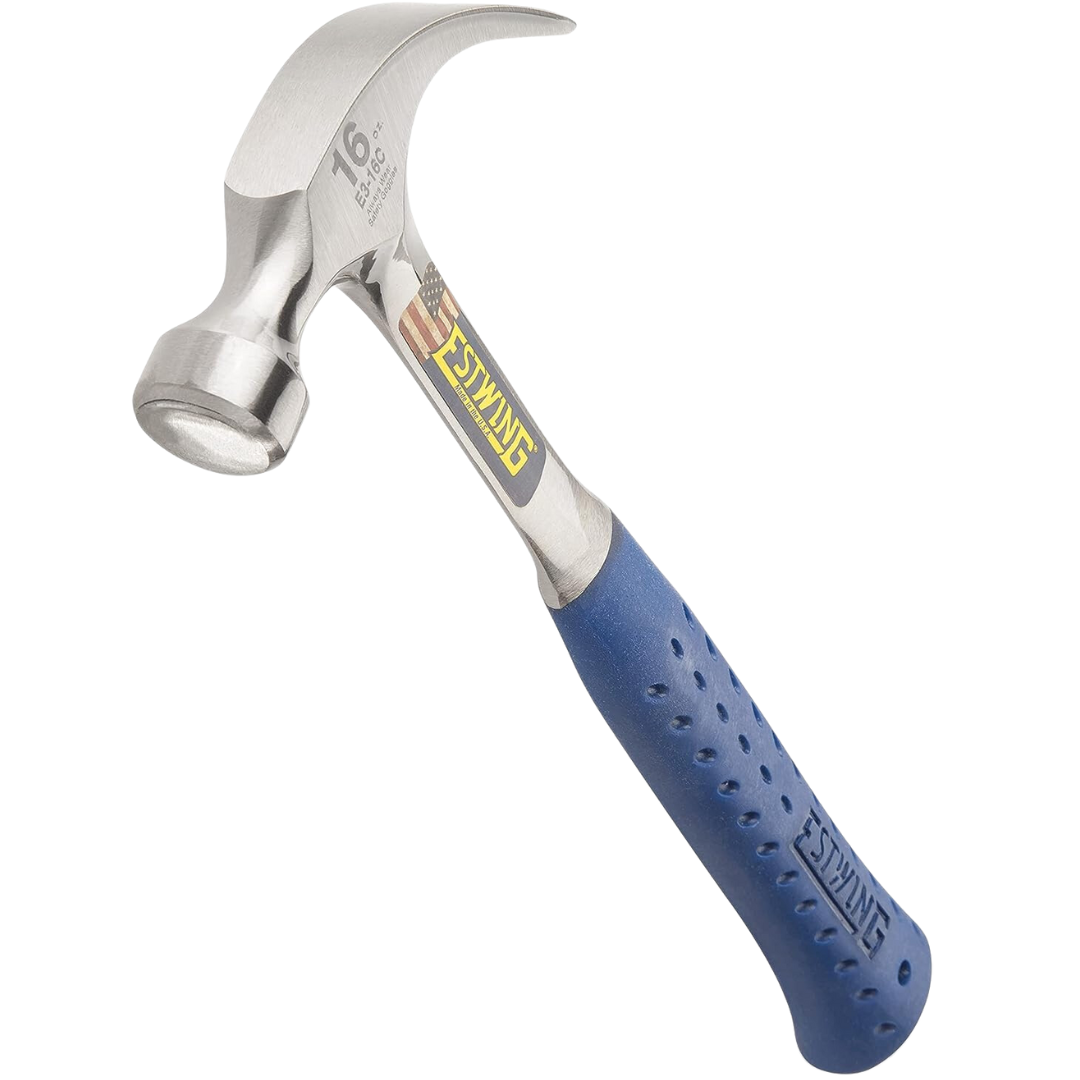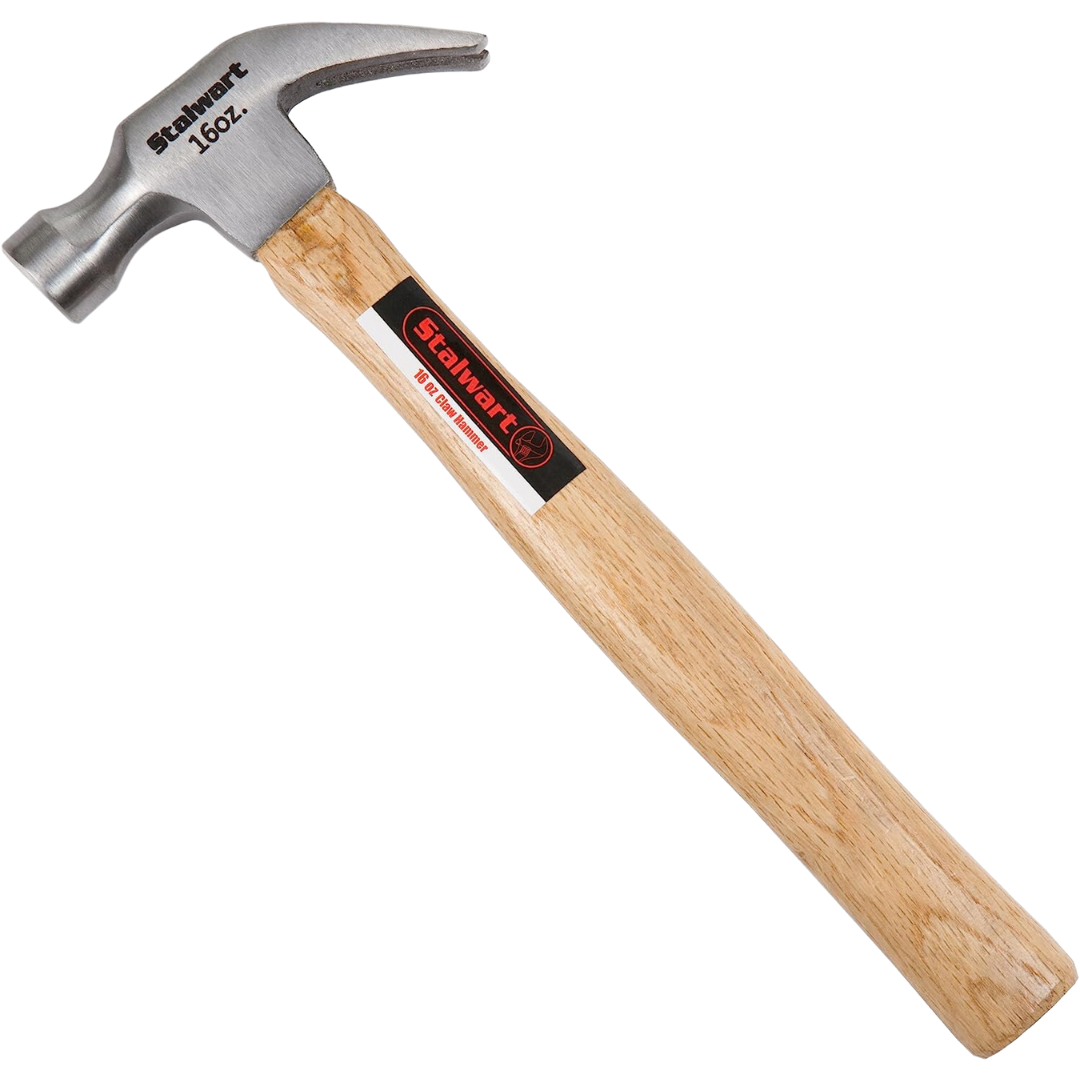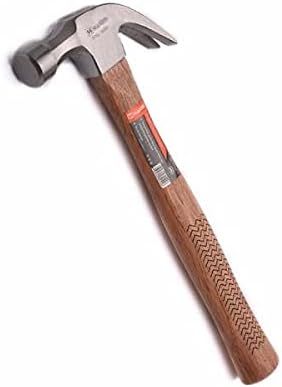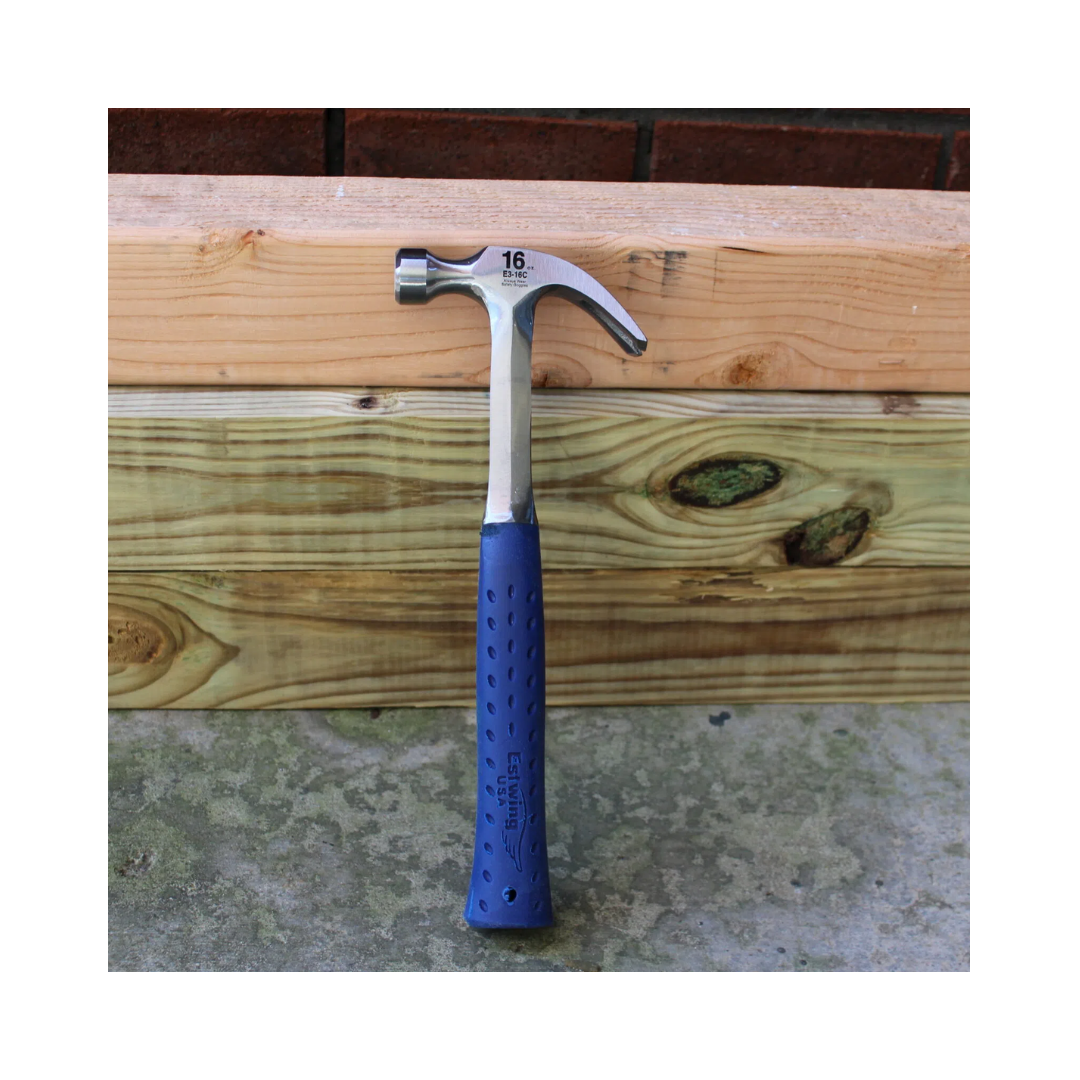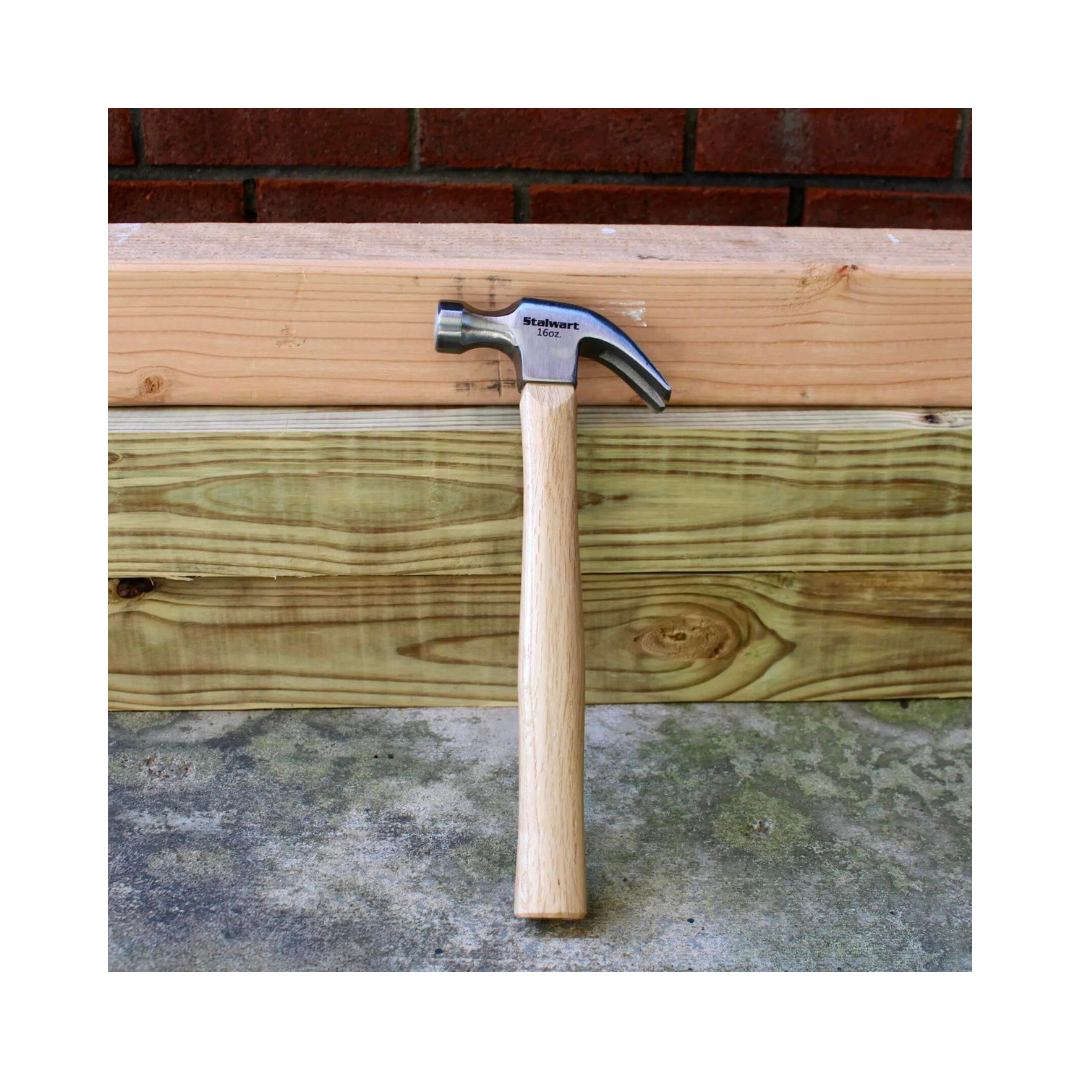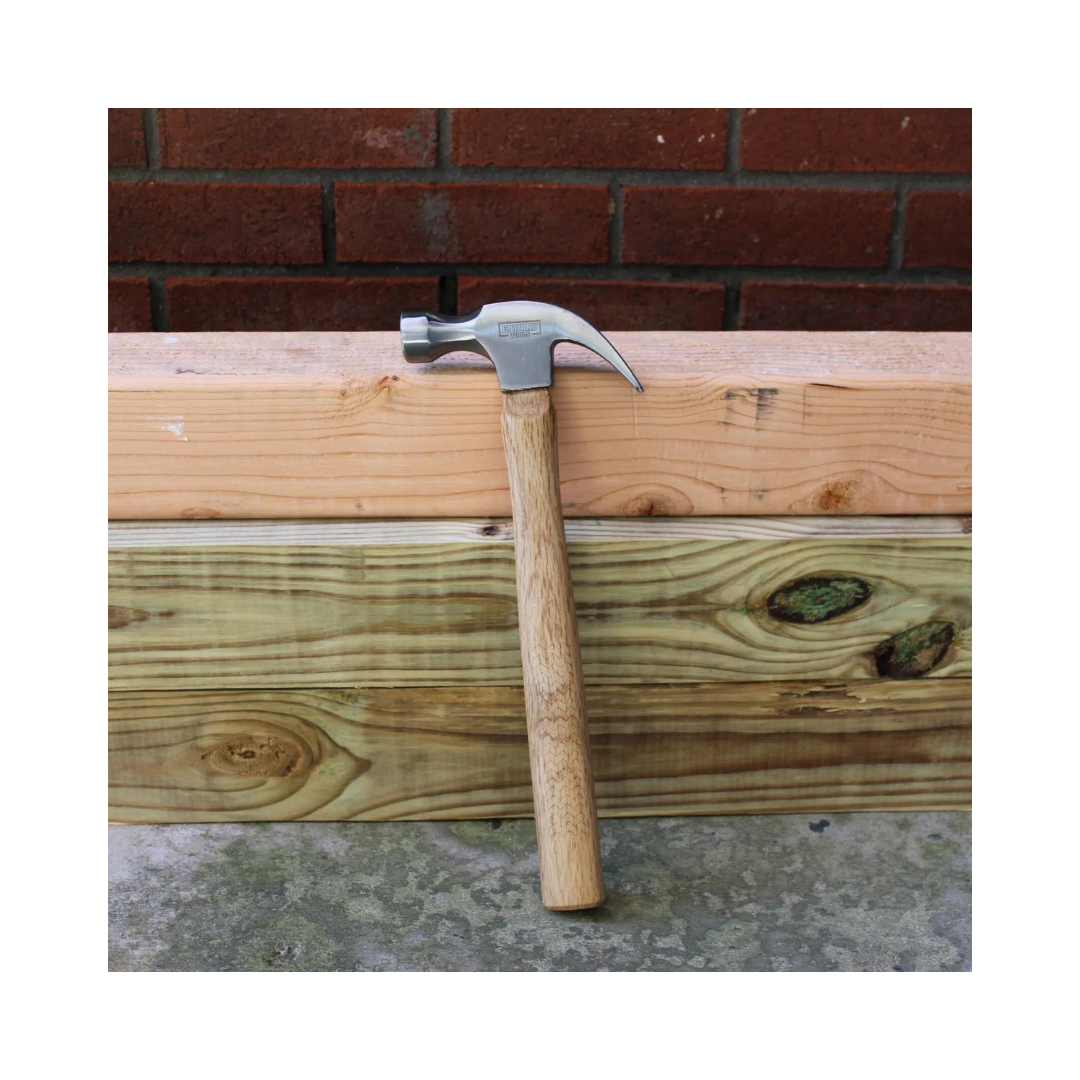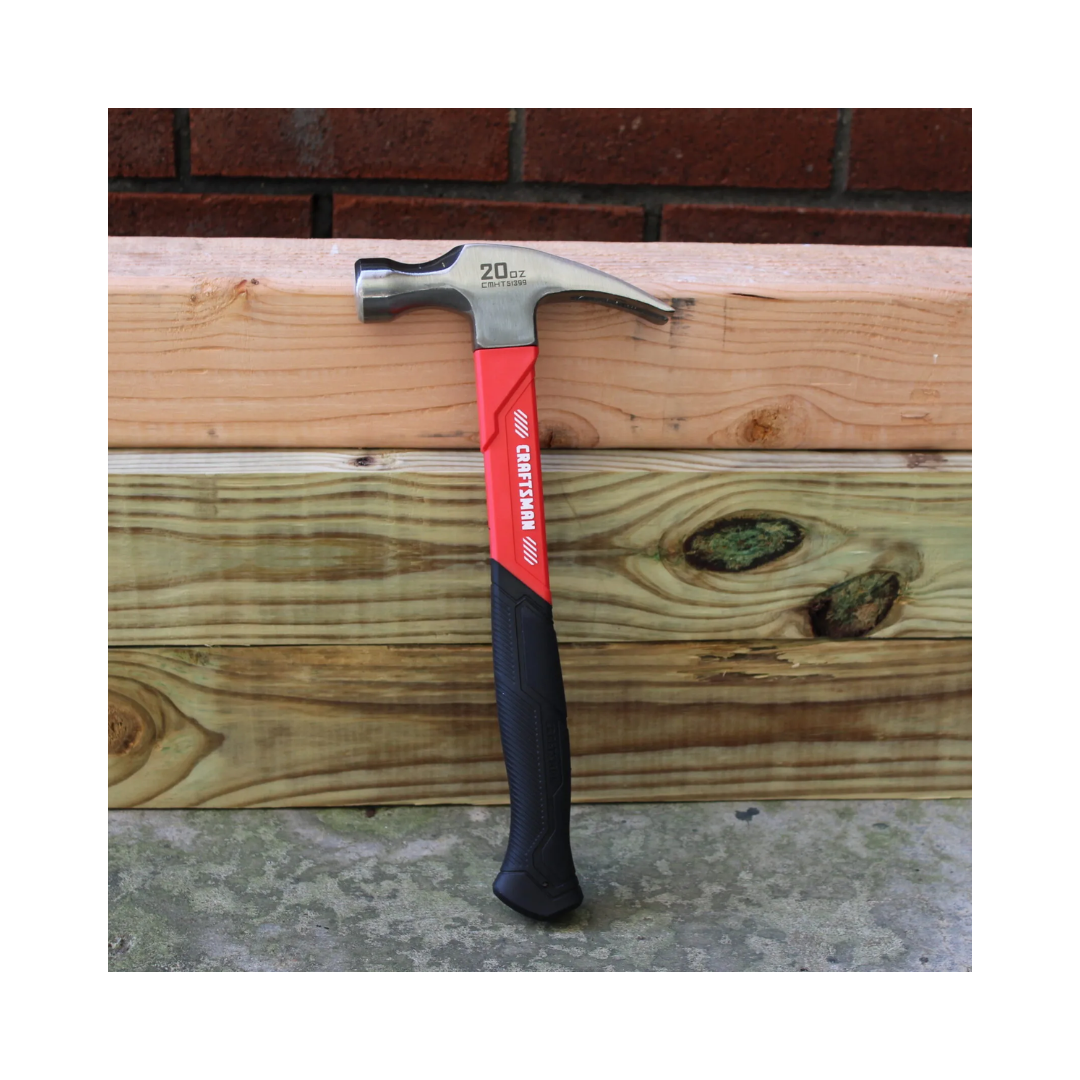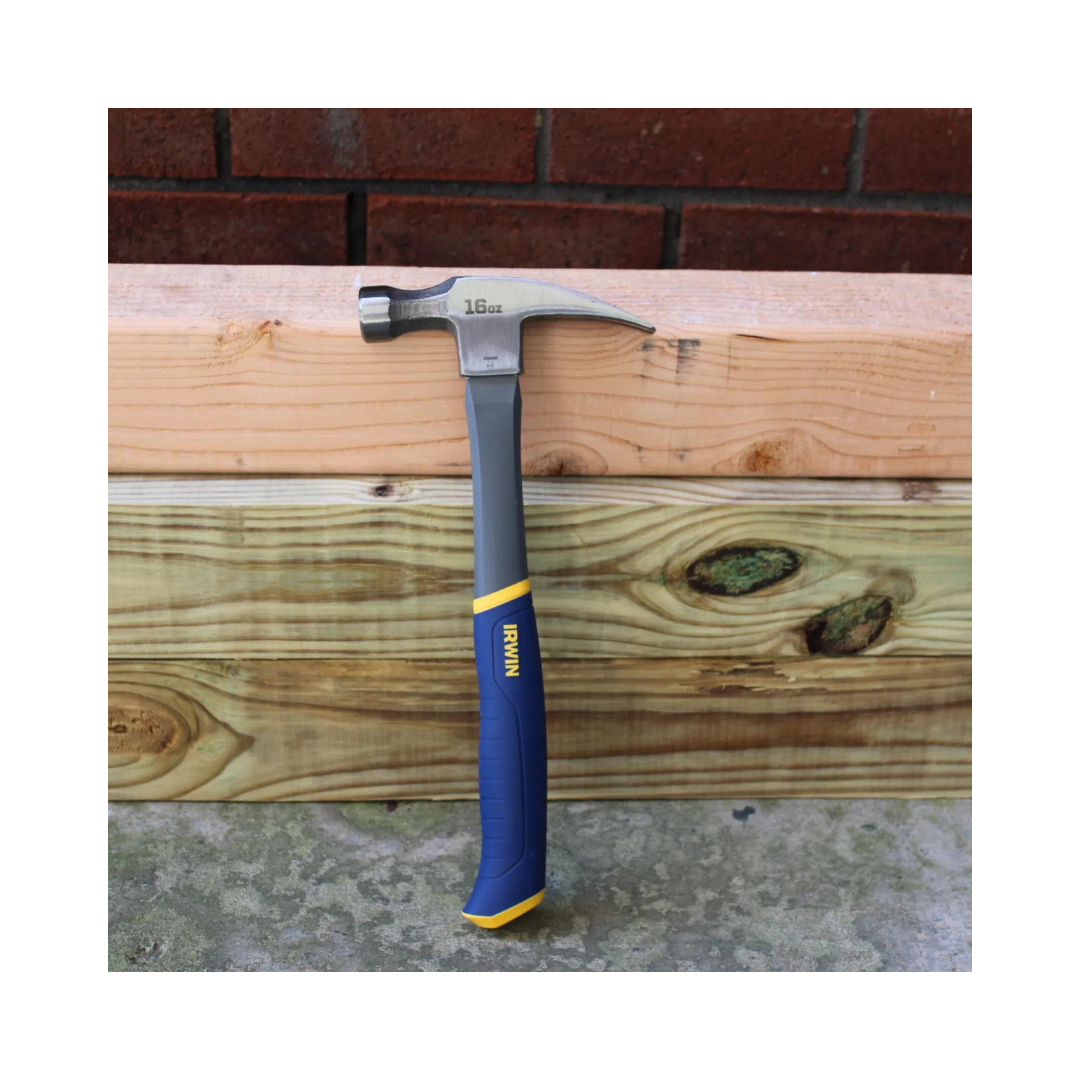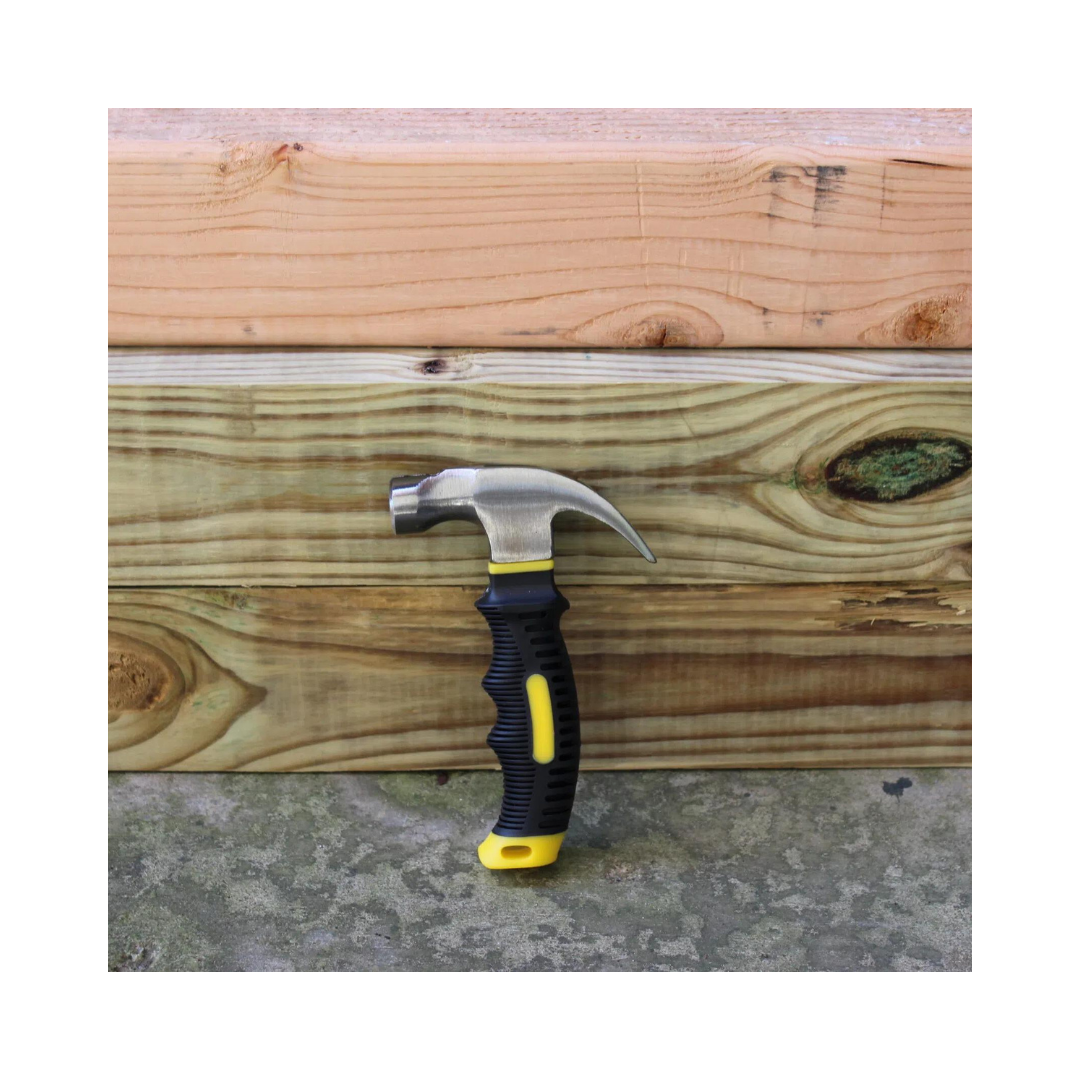We may be compensated if you purchase through links on our website. Our team is committed to delivering honest, objective, and independent reviews on home products and services.
No matter your skill level—whether you’re tackling major home projects or just hanging a picture frame—a good hammer is an essential tool for every homeowner. With options ranging from stubby claw hammers for tight spaces to heavy-duty iron-forged models for demanding jobs, there’s a design to fit every need. Some hammers feature fiberglass handles for added shock absorption, while others have classic wooden grips for a traditional feel.
Choosing the right hammer depends on your needs, whether it’s for light DIY projects or more intensive construction work. Most high-quality hammers fall in the $10–$20 range, though premium models built for heavy-duty use may cost a bit more.
To help you find the best option, the This Old House team tested several top-rated hammers, evaluating their durability, comfort, and performance. Our top pick is the Estwing 16-Ounce Steel Claw Hammer, which earned an impressive 4.9 out of 5 in our testing metrics. Here’s a breakdown of our top recommendations and how each hammer performed. Plus, check out our tool-buying guide for more expert tips.
Top 6 Hammers
- Best Overall: Estwing 16-Ounce Steel Claw Hammer
- Best Design: Stalwart 16-Ounce Natural Hardwood Claw Hammer
- Best Wooden Handle: Edward Tools 16-Ounce Oak Claw Hammer
- Most Heavy-Duty: CRAFTSMAN 20-Ounce Fiberglass Hammer
- Best Fiberglass Handle: Irwin 16-Ounce Fiberglass Hammer
- Best Stubby Claw: EFFICERE 8-Ounce Stubby Claw Hammer
Compare Top Hammers
| Product | Head Weight | Handle | Score |
|---|---|---|---|
| Estwing Claw Hammer | 16 ounces | Steel, rubber | 4.9/5 |
| Stalwart Claw Hammer | 16 ounces | Hardwood | 4.6/5 |
| Edward Tools Claw Hammer | 16 ounces | Hardwood | 4.6/5 |
| CRAFTSMAN Hammer | 20 ounces | Fiberglass, rubber | 4.4/5 |
| Irwin Hammer | 16 ounces | Fiberglass, rubber | 4.1/5 |
| EFFICERE Claw Hammer | 8 ounces | Fiberglass, rubber | 3.8/5 |
| Product | Head Weight | Handle | Score |
Best Overall
Key Features
- Steel handle
- 16 ounces
- Made in the United States
What Customers Are Saying
Many positive reviews centered around the hammer’s durability and its quality build. Additionally, some customers applauded the tool for its easy control and accuracy. Some customers complained about how the product was delivered, with one customer receiving a scratched product and another having difficulty removing the included stickers.
Our Experience
This Estwing hammer drove and pulled nails with ease while offering a comfortable and shock-absorbing grip. While the grip was effective at minimizing vibrations, this hammer ranked third in vibration control behind other hammers like the wooden-handled Edward Tools 16-Ounce Oak Claw Hammer.
This hammer’s easy-to-control handle resulted in just one mishit during testing. Its powerful head also helped prevent mishits and struck each nail with force and precision. The hammer performed the best at driving 4D, 8D, and 16D nails. It took an average of just 5.4 swings to drive a 4D nail into a 2×4 and an average of 12.8 swings when striking 16D nails.
Additionally, this hammer had no problem pulling nails of various sizes and tied with the Stalwart hammer for pulling 16D nails. Unlike many of the hammers we tested, this tool showed minimal scarring after each test and had just a few isolated scratches at the end of our testing process.
Our Score
| Metric | Score |
|---|---|
| Vibration | 4.4/5 |
| Hammerhead width | 5/5 |
| Performance—driving 4D nails | 5/5 |
| Performance—driving 8D nails | 5/5 |
| Performance—driving 16D nails | 5/5 |
| Performance—pulling 4D nails | 5/5 |
| Performance—pulling 8D nails | 4.7/5 |
| Performance—pulling 16D nails | 5/5 |
| Overall score | 4.9/5 |
| Metric | Score |
Best Design
Key Features
- Wooden handle
- 16 ounces
- Drop-forged and heat-treated steel head
What Customers Are Saying
Positive reviews praised the hammer’s solid construction and comfortable wooden handle, and some customers were pleased with the hammer’s well-balanced frame. More critical reviews questioned the durability described by the positive reviewers, with one customer noting that their hammer broke after a couple of weeks.
Our Experience
During testing, this Stalwart hammer excelled at minimizing vibrations and pulling embedded nails out of a 2×4. The hammer scored in the top three for minimizing vibrations and was able to dampen the impact shock when hitting all three nail sizes. It also produced just two mishits during testing, proving to be a hammer that can easily be controlled.
Additionally, the hammer did a great job of pulling nails with its claw, which provided strong leverage against embedded nails. The hammer was the highest-rated during all three nail pulling tests, extracting 4D, 8D, and 16D nails with ease.
Our Score
| Metric | Score |
|---|---|
| Vibration | 4.7/5 |
| Hammerhead width | 4.7/5 |
| Performance—driving 4D nails | 4.1/5 |
| Performance—driving 8D nails | 4.1/5 |
| Performance—driving 16D nails | 4.4/5 |
| Performance—pulling 4D nails | 5/5 |
| Performance—pulling 8D nails | 5/5 |
| Performance—pulling 16D nails | 5/5 |
| Overall score | 4.6/5 |
| Metric | Score |
Best Wooden Handle
Key Features
- Wooden handle
- 16 ounces
- Lifetime warranty
What Customers Are Saying
Positive reviews focused on the hammer’s sturdy and well-built design and affordable price. Negative reviews centered on the hammer’s handle installation. Some customers received a hammer with its head and handle connected by epoxy when they expected it to be wedged as shown in the Amazon product photos.
Our Experience
The Edward Tools 16-Ounce Oak Claw Hammer performed well during our tests, demonstrating its ability to drive and pull a variety of nails. Additionally, its etched grip provided extra control and comfort throughout the testing process.
This hammer was within the top three of all hammers reviewed for vibration control. During each test, the hammer’s wooden handle demonstrated its ability to dampen shock while driving 4D, 8D, and 16D nails. The hammer’s head mishit just twice while driving 15 nails of various sizes, tying for second among all seven hammers reviewed.
Like the other wood-handled hammer, this tool lacked driving power. Although it was more than capable of driving the 4D, 8D, and 16D nails, it was unable to do so in fewer hits than its steel-handled counterparts. However, the hammer’s claw was very effective in pulling each type of nail and was able to pull 4D and 8D nails with minimal effort and required slightly more effort to extract the thicker 16D nails.
Our Score
| Metric | Score |
|---|---|
| Vibration | 4.7/5 |
| Hammerhead width | 4.7/5 |
| Performance—driving 4D nails | 4.4/5 |
| Performance—driving 8D nails | 4.1/5 |
| Performance—driving 16D nails | 4.1/5 |
| Performance—pulling 4D nails | 5/5 |
| Performance—pulling 8D nails | 5/5 |
| Performance—pulling 16D nails | 4.7/5 |
| Overall score | 4.6/5 |
| Metric | Score |
Most Heavy-Duty
Key Features
- Fiberglass handle and over-mold grip
- 20 ounces
- Full lifetime warranty
What Customers Are Saying
Many positive reviews touched on the hammer’s heavy but balanced weight, while other satisfied customers commented on the product’s great value. Though this hammer received few critical reviews, some customers commented on the hammer’s awkward handle design, saying it was difficult to grip.
Our Experience
This 20-ounce CRAFTSMAN hammer was well-balanced during testing and delivered a controllable swing that was effective at driving nails of all sizes. Additionally, its fiberglass handle had a comfortable grip that didn’t slip.
The hammer’s handle was able to minimize vibrations, though its narrow, square-like shape gave off more vibrations than other wood- and steel-handled models. The hammer’s head only mishit three times during testing, though that was enough to tie it with the IRWIN hammer for the second-worst of all reviewed hammers. Despite the hammer’s low hammerhead width rating, its head was durable and showed minimal scarring after testing.
The hammer performed well while driving all three nail sizes and was the third-best hammer at driving 16D nails, taking an average of just 13.8 hits to drive the 3.5-inch-long nail. However, despite being the heaviest hammer we reviewed, the tool wasn’t in the top three hammers for driving 4D nails.
Although this hammer didn’t have a claw with a pronounced curve, it was effective at pulling 4D and 8D nails from a 2×4. When it faced 16D nails, however, the hammer required an extensive amount of force to remove the nails, causing it to rank fifth out of all reviewed hammers.
Our Score
| Metric | Score |
|---|---|
| Vibration | 4.1/5 |
| Hammerhead width | 4.4/5 |
| Performance—driving 4D nails | 3.8/5 |
| Performance—driving 8D nails | 4.4/5 |
| Performance—driving 16D nails | 4.7/5 |
| Performance—pulling 4D nails | 4.7/5 |
| Performance—pulling 8D nails | 5/5 |
| Performance—pulling 16D nails | 4.4/5 |
| Overall score | 4.4/5 |
| Metric | Score |
Best Fiberglass Handle
Key Features
- Fiberglass handle
- 16 ounces
- ProTouch handle grip
What Customers Are Saying
Satisfied customers noted the hammer’s ergonomic design and said the well-balanced hammer was easy to swing. Other positive reviews applauded the hammer’s quality performance and affordable price. Negative reviews centered around the hammer’s soft-faced head, which many saw scar and dent over time. Other critical reviews echoed this sentiment and described the hammer as being best suited for home projects.
Our Experience
Despite this hammer’s lightweight frame and comfortable handle, it performed worse than the other 16-ounce hammers we tested and didn’t manage impact vibrations well—a product of the tool’s lightweight feel. However, this hammer’s weight felt evenly distributed compared to the competing hammers’ top-heavy weight distribution.
Throughout our testing, this hammer mishit three times. Despite the low number of mishits, the hammer tied for the second highest number of mishits with the CRAFTSMAN hammer. After our nail driving and pulling tests, we examined the tool and found severe scarring on both the hammer head and claw.
Out of the seven hammers our team reviewed, the IRWIN hammer came in sixth during the nail driving test. It took the hammer an average of 10 hits to drive a 4D nail into a 2×4 and an average of 19 hits to drive the 16D nails into a 2×4.
This hammer performed better during the nail pulling trials. It easily pulled 4D nails from the 2×4 and stripped just a couple of nail heads during the process. It was also successful in pulling 8D nails, though additional force was required during this portion of the test. The hammer’s pulling performance significantly dropped during the 16D nail test, where it was nearly impossible to pull the large nails from the wood.
Our Score
| Metric | Score |
|---|---|
| Vibration | 3.8/5 |
| Hammerhead width | 4.4/5 |
| Performance—driving 4D nails | 3.5/5 |
| Performance—driving 8D nails | 3.8/5 |
| Performance—driving 16D nails | 3.8/5 |
| Performance—pulling 4D nails | 4.7/5 |
| Performance—pulling 8D nails | 4.4/5 |
| Performance—pulling 16D nails | 4.1/5 |
| Overall score | 4.1/5 |
| Metric | Score |
Best Stubby Claw
Key Features
- Fiberglass handle
- 8 ounces
- Anti-shock handle
What Customers Are Saying
Positive reviews centered around the product’s affordable price and comfortable design. Many reviewers expressed their surprise over the hammer’s effectiveness in completing small jobs around the home. Negative reviews expressed concerns about the hammer’s lack of strength and size and said that the nail holder was difficult to use.
Our Experience
While not the strongest or easiest to swing, the EFFICERE 8-Ounce Stubby Claw Hammer is great at driving and pulling small nails, which is what it’s designed to do. Because of its lightweight design and small frame, this hammer produced the most vibrations of all seven hammers during testing. While the vibrations were mild when striking smaller nails, they were easily felt when swinging the hammer against 16D nails.
As expected, with a lighter hammer comes a smaller head and more mishits. This hammer had five mishits during testing—the most mishits of all products we reviewed. While not as good at driving nails as heavier 16- or 20-ounce hammers, this stubby claw hammer was effective at driving 4D nails, which are about 1.5 inches long.
It took the hammer an average of 10.2 hits to drive one 4D nail through a 2×4. When it came to the larger 8D and 16D nails, the hammer’s efficiency significantly decreased, averaging 23.5 hits to drive a 16D nail.
While the hammer’s small frame provided little leverage, its curved claw provided enough leverage to pull 4D nails out of a 2×4 with little effort. However, the hammer had an extremely difficult time pulling 16D nails and was practically useless in that regard.
Our Score
| Metric | Score |
|---|---|
| Vibration | 3.5/5 |
| Hammerhead width | 4.1/5 |
| Performance—driving 4D nails | 3.5/5 |
| Performance—driving 8D nails | 3.5/5 |
| Performance—driving 16D nails | 3.5/5 |
| Performance—pulling 4D nails | 4.4/5 |
| Performance—pulling 8D nails | 4.1/5 |
| Performance—pulling 16D nails | 3.8/5 |
| Overall score | 3.8/5 |
| Metric | Score |
What Do You Need to Know Before Buying a Hammer?
Before purchasing a hammer, there are some important factors to consider to ensure you’re finding the best fit. Take time to research the handle type, weight, claw style, and extra features, while also setting a budget for how much you want to spend. Read our buying guide below for more information on choosing the best hammer.
Handle
Most hammer handles are constructed with steel, fiberglass, or wood. Steel handles are the strongest of the three materials and add additional weight to the hammer to help drive nails. However, some of the weight may be unevenly distributed depending on the hammer you choose, causing strong vibrations upon impact.
Fiberglass hammers transmit fewer vibrations than those constructed with steel and are a cheaper alternative to steel models. The downside is that fiberglass handles are difficult to replace if they break. Wood handles are the most effective at controlling vibrations and distribute their weight at the head of the hammer to deliver a solid strike. However, some wood handles lack strength and are prone to breaking.
The density of wood is an indicator of its strength, calculated by specific gravity. Specific gravity is a number that’s calculated by dividing the weight of a set volume of wood by the weight of the same volume of water. When considering specific gravity as a reference to strength, hickory and oak are some commonly used woods that are dense and strong. Birch and ash wood are other common handle materials, but they’re less dense and therefore weaker.
Weight
A hammer’s weight affects its power and maneuverability. Light hammers allow for a controlled swing, but they cannot often deliver a heavy blow. Heavy hammers are more difficult to control than their lighter counterparts, but they can drive nails into boards and other materials with ease. When selecting a hammer, it’s important to pick a model that you can consistently swing with comfort.
Claw Style
Hammers come in a variety of styles, including drywall, roofing, ball-peen, and brick. We selected claw-style hammers for our testing because of their popularity, ease of use, and convenience. Claw-style hammers are used for jobs like woodworking and pulling nails.
When it comes to claw hammers, there are typically two variants: curved and straight. Curved hammers are equipped with a rounded claw to increase leverage for pulling nails and come in a variety of weights to fit different customers’ power needs. Straight, or rip, claw hammers offer a flatter claw to help with demolition projects like pulling up wood, plastic, or tile.
Cost
Most quality hammers can be purchased for under $25. While this is the average cost of a hammer, many factors can increase the price of this tool, including its handle material. For example, the Stiletto Ti-Bone Hammer is constructed with durable titanium and comes with a patented side nail puller, resulting in a higher price.
A hammer’s weight also influences its price, with heavier hammers generally costing more. For example, Estwing’s 20-Ounce Straight Rip Claw Hammer costs more than Dewalt’s 16-Ounce Rip Claw Hammer.
Additional Features
Some hammers are equipped with unique features that help users drive or pull nails. For example, some models contain a magnetic nail starter that helps users avoid holding a nail with their free hand, minimizing the risk of injury. Other hammers contain claws with an exaggerated head to provide more leverage for pulling nails.
Our Review Standards
To select seven hammers for this review, the This Old House Team scoured Amazon for top-rated and high-performing hammers in four categories: stubby claw, steel handle, wood handle, and fiberglass handle. When making our product selections, we looked at factors like the total number of Amazon reviews for each product, overall ratings, and Prime eligibility.
From there, we narrowed our selection down to seven unique hammers and tested each hammer on four metrics: vibration, hammer head width, nail driving performance, and nail pulling performance.
Testing Metrics
Vibration
The amount of vibration a hammer transmits is closely tied to its handle material, with steel handles causing strong vibrations and wood handles minimizing vibrations. Hammers that transmit an intense vibration when striking a nail may be uncomfortable and decrease the length of time you can use the tool.
Hammer Head Width
The size of a hammer’s face is particularly important when driving nails. A larger hammer head makes it easier to strike a nail, though too large of a head inhibits your view and decreases your control of the hammer, which can cause mishits.
Performance—Nail Driving
While it’s important that a hammer minimizes impact vibrations and offers a wide hammer head, it’s just as important to determine how well the hammer drives nails, particularly nails of various sizes.
Performance—Nail Pulling
A hammer must be able to pull out crooked or damaged nails. Because larger nails may be more difficult to pull out of wood, it’s important to test how well a hammer extracts nails of various sizes.
Testing Process
To test each hammer, we drove and pulled five 4D, 8D, and 16D nails into a 2×4. These nails had head diameters of 1/4-inch, 9/32-inch, and 11/32-inch, respectively, which allowed us to test how each hammer’s head performed against various-sized nails.
We measured each hammer’s performance and efficiency by tallying the number of strikes and time required to drive the nails into the 2×4. We also rated how effective each hammer was when pulling the three nail sizes and noted the amount of cosmetic damage inflicted while pulling the nails. While driving each of the three types of nails, we also measured the number of vibrations felt from each hammer.
Additionally, our team wanted to determine how each hammer’s head size affected its usability, so we noted the number of mishits each hammer had during each nail driving test and scored each product based on that number.
It’s important to note that a hammer’s size and weight is typically representative of the type of nail it can drive. For example, if you’re framing a wall using 16D nails, a heavy 16- or 20-ounce hammer will perform the best. However, to educate you on where each hammer excels and falls short, we found it necessary to conduct the same tests on each hammer to better recommend a product.
Scoring
To score each hammer, we broke the metrics down into categories worth five points each. We then averaged the scores from these categories to determine each product’s overall score. Here’s a look at how we scored each tool belt.
Vibration
The hammer with the least amount of vibration received all five possible points, while the second-best received a 0.3-point deduction, the third-best received a 0.6-point deduction, and so on. If two hammers delivered an equal amount of vibration, they received the same score.
Hammer Head Width
We awarded all five possible points to the hammer that mishit the fewest number of times throughout its 15-nail test, while the second-best received a 0.3-point deduction, the third-best received a 0.6-point deduction, and so on. If two hammers performed equally, they received the same score.
Performance—Driving Nails
The hammer that drove all three types of nails into the 2×4 the fastest and with the most ease received all five possible points, while the second-best received a 0.3-point deduction, the third-best received a 0.6-point deduction, and so on. If two hammers performed equally, they received the same score.
Performance—Pulling Nails
The hammer that pulled all three types of nails out of the 2×4 with the least amount of effort and cosmetic damage received all five possible points, while the second-best received a 0.3-point deduction, the third-best received a 0.6-point deduction, and so on. If two hammers performed equally, they received the same score.
Frequently Asked Questions About Hammers
What are hammers used for?
Hammers can be used for a variety of jobs, including carpentry, construction, and even masonry. While there are various types of hammers, curved-claw hammers are the most popular. These types of hammers are used for driving nails, pulling nails, and other tasks like driving a chisel or breaking up a tiled wall.
Where should you hold a hammer?
To ensure that you generate as much power as possible, hold your hammer near the end of its handle to increase leverage and strength. Make sure you don’t hold the hammer too close to its head, as this will decrease your power and increase the number of hits needed to drive a nail.
What type of steel is used for hammers?
Most hammers are constructed using plain carbon steel, which is a combination of iron and carbon elements. This metal is strong and shock-resistant, making it ideal for hammers and other tools.
Our Methodology
This Old House has empowered homeowners and DIY-ers for more than four decades with top-notch home improvement advice in the form of television programs, print media, and digital content. Our team focuses on creating in-depth product and service review content. To date, we’ve published over 1,600 reviews on products in the home space, including power tools, outdoor equipment, major appliances, kitchen gadgets, electronics, and more that focus on product quality and helpfulness to our readers.
To provide our readers with the best recommendations possible, we rely on several key sources of information to help guide our selection process.
Initial Research: Our research process began by generating a list of hammers with a significant number of verified buyer reviews and an average customer review rating of 4–5 stars. We looked at positive and negative reviews alike, focusing on information from both satisfied and critical buyers.
Expert Insights: To complement our in-house expertise, our team looked at reviews and videos from trusted publications and independent testers, spoke with subject matter experts, and drew insights from reader contributions.
Final Product Selection: We then began fine-tuning our list by replacing older models with the latest versions and eliminating any discontinued models. From there, we compared each model’s feature set to create a final short list, selecting the best-in-class options for various buyers, budgets, and scenarios.
Once we conclude our research, we craft a comprehensive, user-friendly article of recommended products and additional information to help our readers make the right purchase.
Questions or Comments?
To share feedback or ask a question about this article, send a note to our team at reviews@thisoldhousereviews.com.
